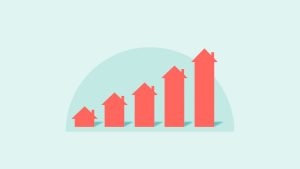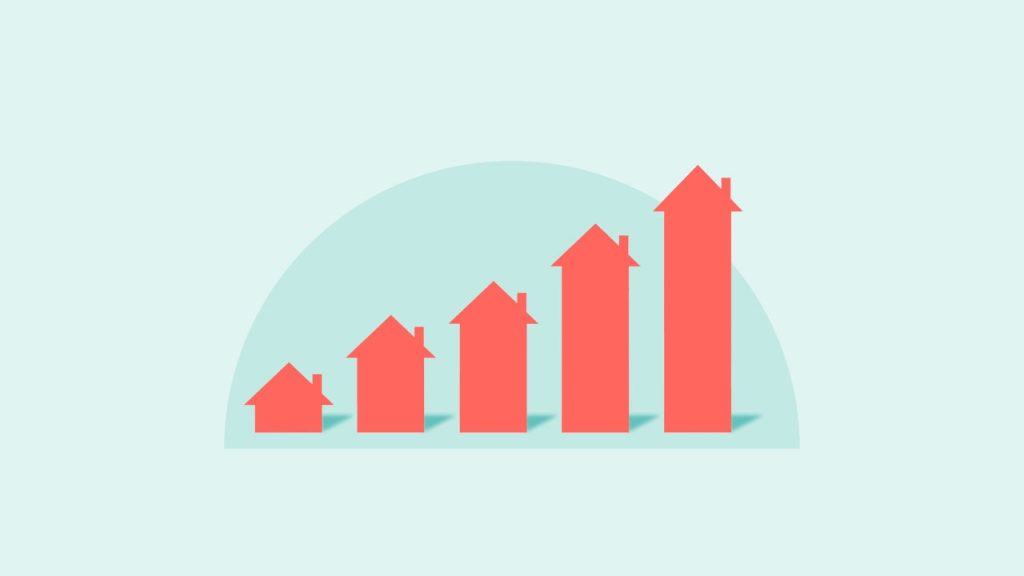Richard Drury/ Getty Images; Illustration by Austin Courregé/Bankrate
The average rate on a $30,000 home equity line of credit (HELOC) steadied at 8.28 percent this week — close to its lowest level in a year and a half, according to Bankrate’s national survey of lenders. In contrast, the average $30,000 home equity loan rate dipped to 8.40 percent.
Cheaper HELOC rates dovetail with another housing trend, says Joe Zeibert, vice president of Mortgage and Capital Markets at FICO: More homeowners are choosing to stay in their current homes and update them, rather than move to a new place.
“This trend drives a growing need for renovations and home improvements,” Zeibert says. “HELOCs are an ideal financial solution to fund these projects. This convergence of factors positions home equity products, especially HELOCs, for a strong performance in the coming year.”
| Current | 4 weeks ago | One year ago | 52-week average | 52-week low | |
|---|---|---|---|---|---|
| HELOC | 8.28% | 8.52% | 9.31% | 9.02% | 8.27% |
| 15-year home equity loan | 8.49% | 8.48% | 9.00% | 8.65% | 8.37% |
| 10-year home equity loan | 8.54% | 8.55% | 9.01% | 8.69% | 8.46% |
| Note: The home equity rates in this survey assume a line or loan amount of $30,000. | |||||
What’s driving home equity rates today?
For homeowners looking to tap record amounts of home equity, the good news could well be ongoing. Bankrate Chief Financial Analyst Greg McBride, CFA, forecasts that HELOC rates will continue to decline in 2025, averaging 7.25 percent, their lowest level in three years.
The demand for HELOCs is being driven by two factors: lender competition — as banks and mortgage companies try to attract applicants with low-for-a-limited-time loan terms — and the Federal Reserve’s actions. The Fed cut interest rates three times in 2024 and may slash rates further this year, though it did signal at its last meeting there could be fewer cuts than expected.
“I expect the economy is still going to continue to grow at a slower, but still solid pace,” McBride says. “An environment where the economy is in good shape and homeowners have a pile of equity to draw from is also conducive to more marketing efforts and things like introductory rates. The forecast of where the HELOC rate is going to be at the end of the year encompasses not just the effects of what I expect to be three rate cuts from the Fed, but also one where we’re seeing more introductory offers and lower rates.”
What influences home equity rates?
Several factors can influence interest rates on HELOCs and new home equity loans. That includes the prime rate, which is tied to Federal Reserve monetary policy. When the Fed raises rates, borrowing costs on equity-based loans tend to go up. The opposite tends to happen when it lowers rates.
The individualized offer you receive on a particular HELOC or new home equity loan reflects an additional factor: your creditworthiness, specifically your credit score, debt-to-income ratio and the value of the home.
To be sure, the Fed’s moves influence interest rates on a variety of credit products. However, because HELOCs and home equity loans are linked to your home as collateral, those rates tend to be much less expensive than the interest charged on credit cards or personal loans, which aren’t secured.
Home equity rates vs. rates on other types of credit
| Average rate | |
|---|---|
| HELOC | 8.28% |
| Home equity loan | 8.40% |
| Credit card | 20.15% |
| Personal loan | 12.48% |
| Source: Bankrate national survey of lenders, Jan. 15 | |
-
The Bankrate.com national survey of large lenders is conducted weekly. To conduct the National Average survey, Bankrate obtains rate information from the 10 largest banks and thrifts in 10 large U.S. markets. In the Bankrate.com national survey, our Market Analysis team gathers rates and/or yields on banking deposits, loans and mortgages. We’ve conducted this survey in the same manner for more than 30 years, and because it’s consistently done the way it is, it gives an accurate national apples-to-apples comparison.
Read the full article here

